Last Updated on October 10, 2025 by Michelle
Good flour starts with a good grain mill. And a good grain mill is one that works best for your kitchen, budget, and baking style.
Now… let’s talk about if Nutrimill or Mockmill grain mills are best for you. There are pros and cons to both, so let’s dive in andalk about what you need to know.
Are Nutrimill grain mills good?
I’ve used all three models of grain mills that Nutrimill carries. And, overall, they’re all good machines. We’ll break this down more later, but for now here’s an overview of the mills Nutrimill sells:
The Harvest grain mill
The harvest is a beautiful, compact stone mill. Unfortunately, it isn’t as user-friendly as I’d like, especially for newbies trying to dive into the world of fresh milled flour. It does the job, and is certainly powerful enough to grind wheat into decent flour.
The Classic grain mill
This bad boy makes the fines flour of any mill I’ve tried. It’s large, great for milling lots of flour at once. It uses steel impact head technology, so it’s not a stone mill. It’s my favorite budget-friendly mill that does a really good job milling lots of flour, quickly.
The Impact grain mill
The Impact mill was Nutrimill’s most recent addition to the lineup. It’s currently the most affordable mill on the market, and it does a good job. It’s similar in function to the Classic mill, with a slightly smaller hopper and flour canister. It packs up in a way that can make it better for small spaces than the Classic, but, in my opinion, the Classic is a bit more user-friendly than the Impact.

Comparing Nutrimill and Mockmill models
I briefly compare all the Nutrimill grain mills to the many options available with Mockmill in this video:
Nutrimill pros
- Nutrimill has insanely awesome customer service, and is always happy to take a call, answer and email, or handle any issues or questions you may have. I personally know several of the folks over there, and I absolutely adore everyone I’ve ever connected with. They’re an awesome team of people who won’t let you down.
- They have sales, coupon codes, and deals to constantly take advantage of. In fact, my code (soulyrested) even works on the Impact mill (which is already super easy on the wallet!).
- Their mills are known for being super long-lasting. I’ve heard of folks who have some of Nutrimill’s original mixers and grain mills from the 80s and 90s that are still going strong!
Nutrimill cons
- Mills are often out of stock, and when they are in stock it’s a race to see who will snag the mill they’ve been eying!
- Their more affordable models (the Classic and Impact) are closed-canister style, meaning that it’s harder to make just the right amount of flour, or mill just a little bit at a time. Also means more dishes to wash! (More details on stone vs. impact mills here)
- You cannot re-mill flour in either of the impact-style Nutrimills, and while you can technically re-mill flour in the Harvest, I found that the stones seem to “glaze” over pretty easily when doing so.
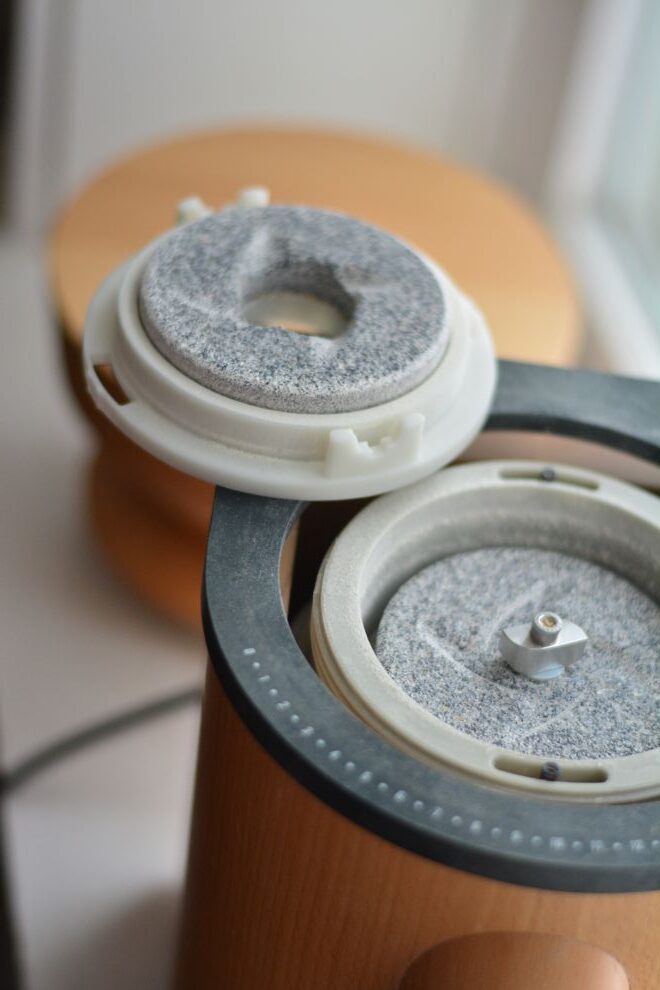
Are Mockmill grain mills good?
I’ve used both a Mockmill 200 Lino and a Mockmill 100 Lino. They’re both great mills that were obviously thoughtfully designed for everyday use. Mockmill sells (essentially) three different mills:
Mockmill 100 (Lino style and “regular”)
The Lino Mockmills are the same interior as the “regular” mockmills, but with a wooden outer housing. The number 100 stands for the milling speed–100 grams of flour milled, per minute. This is an on-demand stone mill.
Mockmill 200 (Lino style and “regular”)
Again, the Lino Mockmills are the same interior as the “regular” mockmills, but with a wooden outer housing. The 200 means this mill will grind 200 grams of flour per minute, twice as fast as the 100. These on-demand stone mills allow you to mill just the right amount of flour, into any bowl you choose.
Mockmill professional
This is similar to the Mockmill 200, but with extra protection built-in for long usage times. It has a built-in heavy-duty fan so it won’t overheat if it’s being run a lot, and the motor is built a bit different to allow for longer running times without overheating.
Mockmill pros
The Mockmill 200 Lino is my everyday-use grain mill. This is because it’s because it’s beautiful and an absolute workhorse. It mills incredible flour, quickly. It tackles any job I’ve thrown at it without bashing an eyelash.
- They offer wooden and white options in both 100 and 200 models, so something is bound to fit your budget. All of their mills are on-demand style, so you can always mill the right amount of flour, into any bowl.
- Mockmills are known for their thoughtful and practical design. They do their job, very well.
- Easily re-mills flour without glazing the stones.
Mockmill cons
- Not based in the U.S., so for those of us in the states it can be difficult to reach customer service at certain times of day.
- The wooden models are definitely on the pricier end. If you aren’t as concerned about aesthetics, opt for the white models that come with the same interior, just a different exterior.
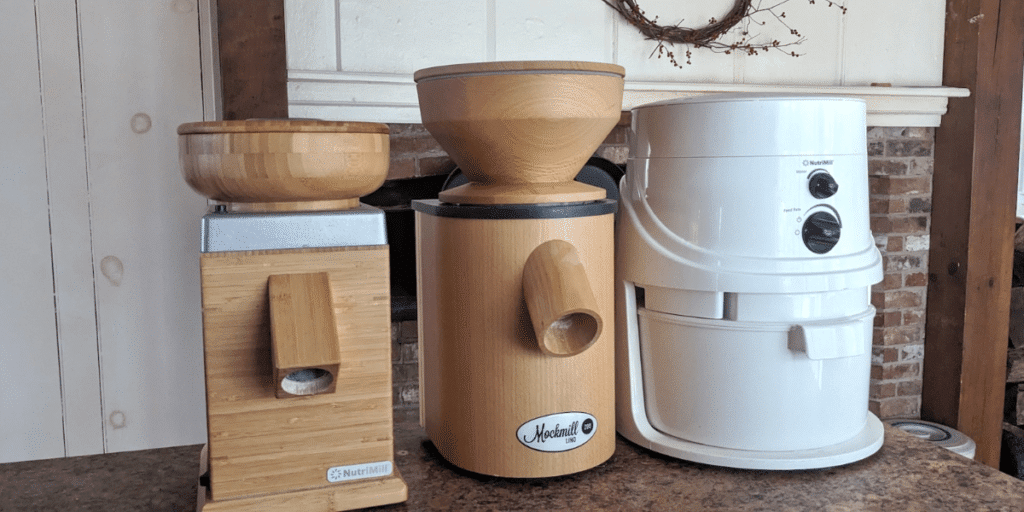
Mockmill 200 vs. Nutrimill Harvest mill
These two mills are probably the most similar of all of the Mockmills and Nutrimills. They’re both stone mills, in a wooden housing that are on-demand style.
Size wise, the Harvest is a bit shorter than the Mockmill. The Mockmill is more of a rounded shape, versus the boxy shape of the Harvest. Overall, I’d say they take up about the same space/footprint, though.
In terms of output, Nutrimill claims the Harvest mill mills 128 grams of flour per minute. I would add my personal note that I’ve found it to actually be slower than that–especially if you want really fine flour. The Mockmill 200 mills at a rate of 200 grams of flour per minute.
The fineness of flour you’ll get from the Mockmill is remarkably better than what you’ll get from the Harvest, at least in my opinion. The Harvest can make fine flour, with some work and patience. The Mockmill mills fine flour, no questions asked. They can both mill anything from fine flour to cracked grains, and everything in between.
My overall pick between these two mills would be the Mockmill. However, the Harvest is available at a more budget-friendly price point, if looks are important to you (if you want a pretty wooden exterior, not a white Mockmill!).
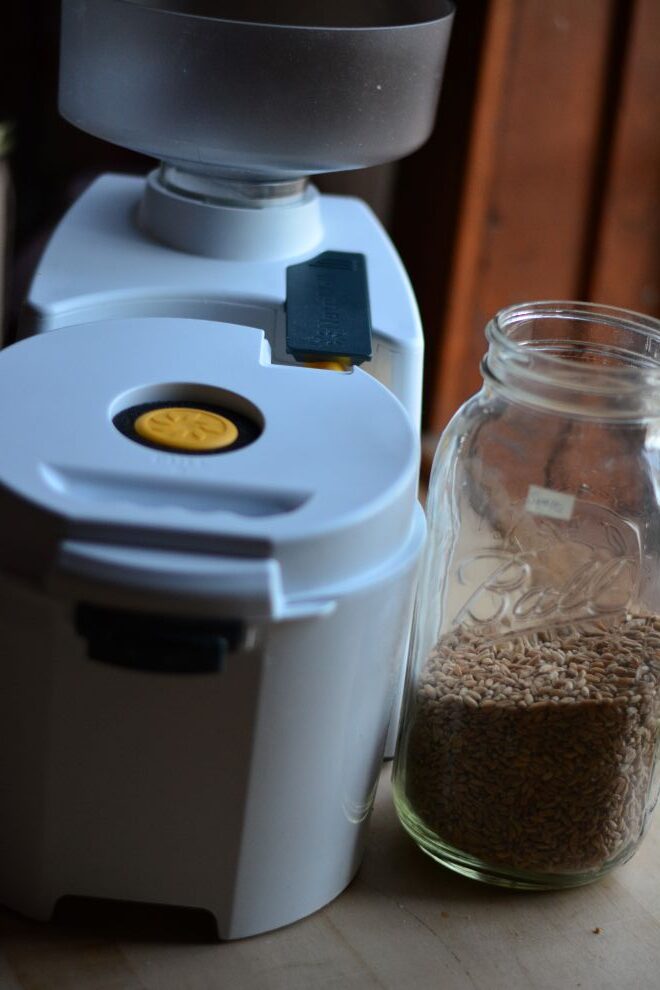
The big picture: Nutrimill vs. Mockmill
If you’re looking for easier-on-the-wallet options that will do the job, Nutrimill makes so many different great mills.
However, for folks looking for an on-demand style mill on a budget, I’d go for a white Mockmill–either 100 (slightly slower milling) or 200.
Bakers who make lots of flour at once but don’t want to spring for a Mockmill Professional, go for the Nutrimill Classic. You won’t be disappointed.
For those wanting a beautiful mill on their counter who aren’t in a big rush for flour, grab the Harvest mill.
My personal daily-use pick is the wooden Mockmill 200. It simply checks all my boxes for beauty, versatility, practicality, and it just does a really good job.
Looking to start out with fresh flour without breaking the bank? The affordable and simple-to-use Impact mill, all the way.
As a sidenote, if you’re worried about the noise different mills make, check out this post for a conversation about noise mills make.

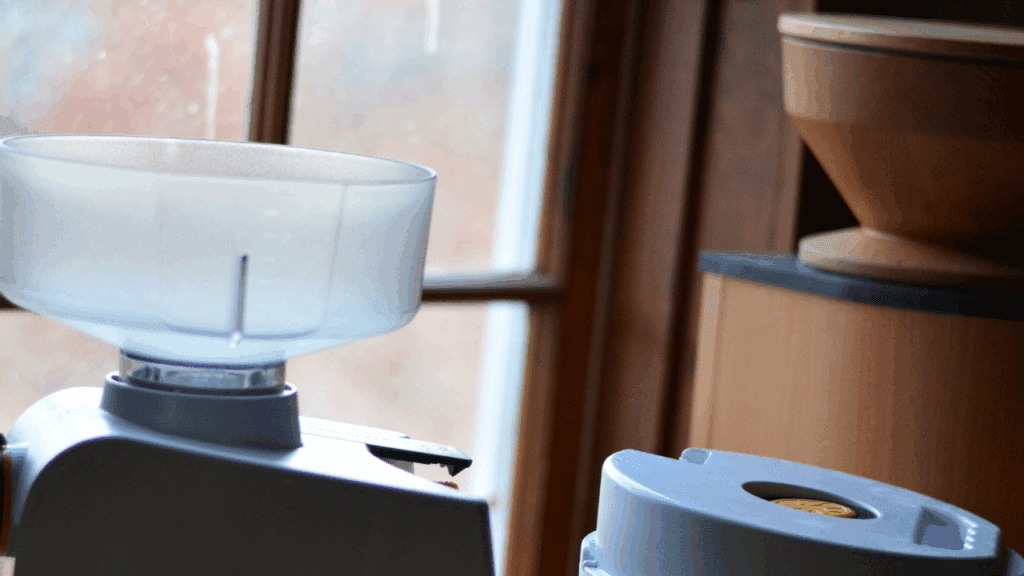

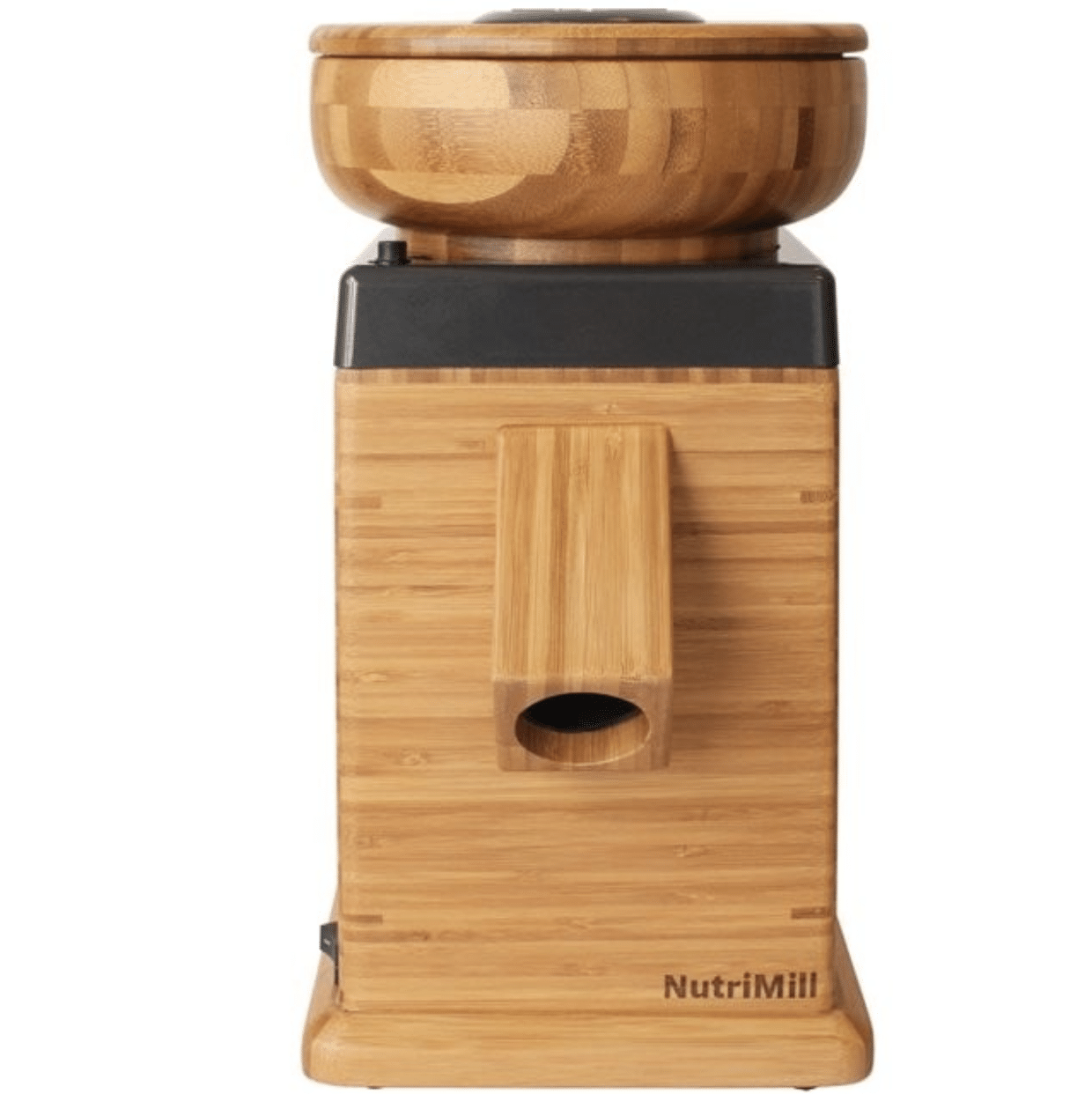


I love my Mockmill. I am not in a season of life where I have the time or patience for finicky machines. The Mockmill is so simple to get nice, fine flour from every time.
Great review of those mills. I think having an on demand mill would be great!
I’m glad it was helpful for you!
This such a helpful article. We will be purchasing a grainmill in the Spring and this gives so much insight. Thank you!
Being able to fresh milk your own flour would be so swell. Life-changing!! 😀